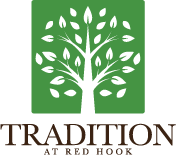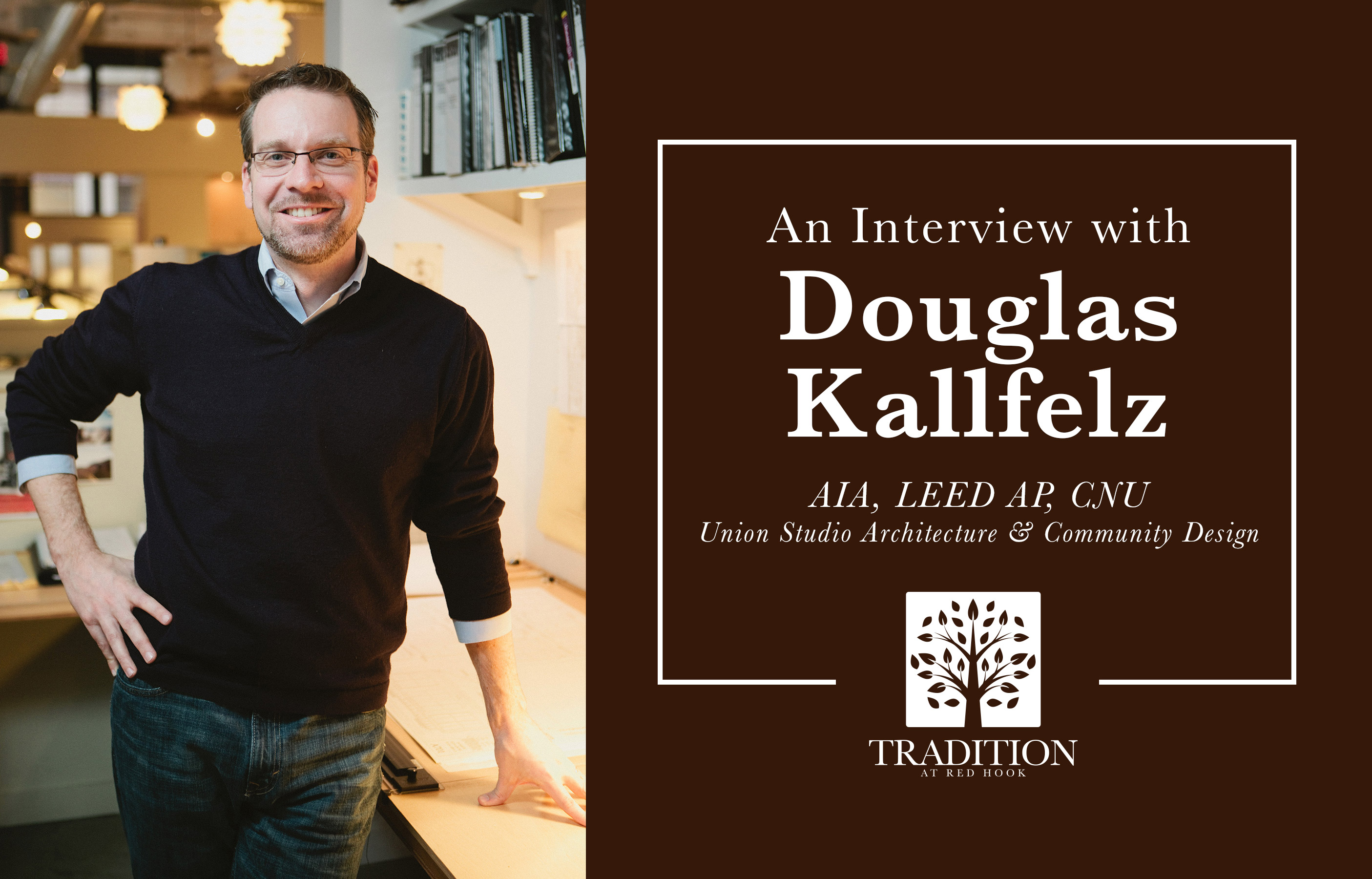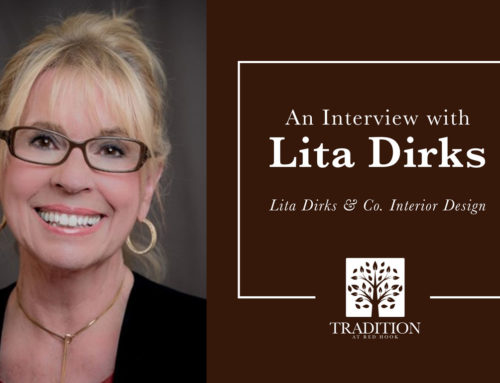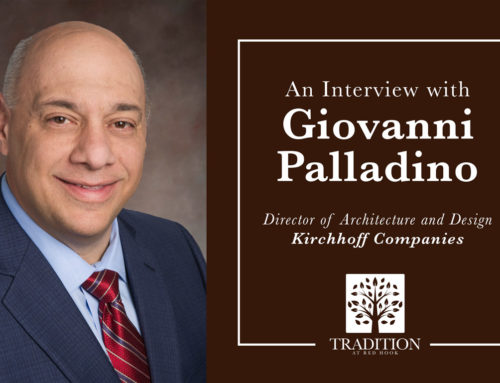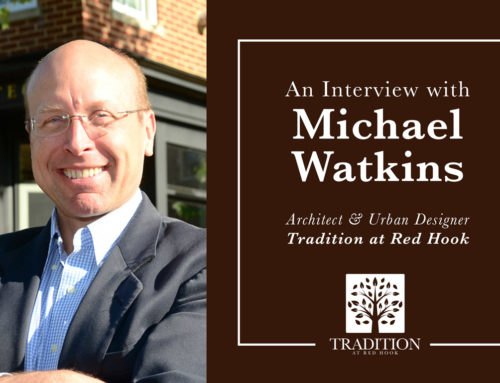Douglas Kallfelz, AIA, LEED AP, CNU
UNION STUDIO ARCHITECTURE & COMMUNITY DESIGN
Douglas Kallfelz, partner at Union Studio Architecture & Community Design, made a significant discovery early on in his career that has shaped his professional journey. The architect, originally from Ithaca, NY, realized after years of working in large cities that he wanted to use his work “to have more impact on community life”. Learn more about our residential architect for Tradition at Red Hook here:
What prompted your interest in Traditional Neighborhood Developments?
Prior to the founding of our practice in the early 2000’s, my partner and I had both spent a great deal of time working for bigger architecture practices focused on high budget and institutional projects in Boston and New York. While this was an incredible experience and what most architects dream of doing when they leave architecture school, we separately came to the realization that what was most inspiring to us was the opportunity to foster and grow civic and community life. Around that time, we discovered New Urbanism, a movement focused squarely on thinking about communities in a much more holistic way. New Urbanism challenged developers and architects to focus on designing pedestrian-friendly, civic-minded places. It was about rethinking the way we design neighborhoods by looking back at those that were, historically, the best places in which to grow up and live. We felt very connected to this idea, and got to work on our first Traditional Neighborhood Development (Warwick Grove, Warwick, New York), which was really successful. The rest is history!
What do you love most about the Traditional Neighborhood Development concept?
As I alluded to above, I love the fact that TNDs place a very strong emphasis on pedestrian and community life and with that the detail and design of all aspects of a neighborhood – not just the individual home and a nice bit of landscaping. I also love that traditional neighborhood design challenges us to balance the need for pedestrian and civic space with the demands of modern life. Traditional neighborhood design does not ask us to merely copy the examples from our past…but rather to embrace what made those places special and adapt those patterns to the needs of modern life. This is a huge challenge but immensely satisfying when it comes together. I also enjoy that the architect is not just asked to design a home…but to think equally about the connections between the homes and the streets, the quality and continuity of sidewalks, and the experience of public spaces. This is a very different way of thinking compared to what has been the prevailing pattern of residential development for 50 years. The Traditional Neighborhood Development (TND) concept really changed the emphasis of residential development from one merely focused on providing homes to one focused on creating places that people love.
Why is the front porch so important?
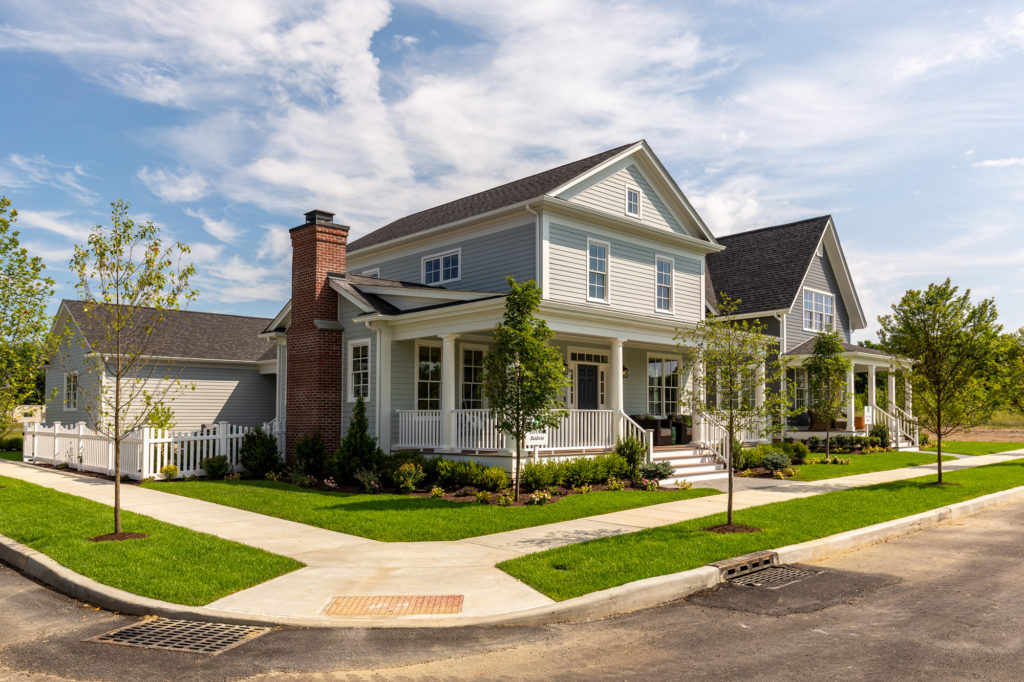
Photo by: Alon Koppel Photography
Front porches are the place where private life and community life converge…it is the place that asks us to participate in civic life even in the comfort of a wicker chair with coffee in hand. I think it’s best illustrated by an example. I live in a small waterfront town in Rhode Island. A town where the historic core is precisely the kind of neighborhood that we look to for inspiration when we design new traditionally inspired communities. Last year, our community started “Porchfest” and it brought home exactly why porches are so important and why people love the idea of a big front porch. During Porchfest, people open up their porches (and in some cases their living room) and invite musicians of all types to set up on the porch and play music. People just walk up and down the street and get invited to these porches to listen to music, share a drink – chat. It’s amazing. People just walking the sidewalks and stepping into this in-between of public and private…it makes us all feel that much more connected. It’s great! This kind of event couldn’t really happen in a place where the homes, porches, streets, and sidewalks don’t contribute to making a street worth strolling along. People really enjoy the connections they make when they have the right space for it. This is exactly what we hope to provide at Tradition.
What impact do you feel this type of community has on long-term growth and sustainability?
Traditional neighborhood planning is such an important concept because it’s inherently a more sustainable way for us to build. Not only does traditional neighborhood planning create the opportunity for connected community life, but it is inherently more dense than planning patterns of the past – and this means using up less of our natural resources to boot! A conventional project with a similar number of homes could occupy 2-3 times the amount of land with less amenities. Traditional planning patterns give us a chance to balance conservation with sustainable growth that really resonates with communities like Red Hook. I think Tradition is an excellent opportunity to demonstrate the value of this kind of thinking and hopefully will be an example for what future growth and development could look like.
You’re not only designing homes – you’re building a community. What is it like to be part of that?
It’s wonderful! It brings architects, in many ways, back to what architects used to do years ago; I love that this kind of work asks us to be fully invested in the long-term health of a community. It’s so nice to be part of a team that is considering more than just the building – we’re thinking about the landscape, the street, the open spaces, the community – how it will all feel to everyone. This kind of work brings together so many disciplines that were, in the not-too-distant past, very disconnected. It’s more inclusive and enriching – and I think you can feel that when you walk the streets at the end of the day.
What does “New Urbanism” mean to you?
To me, New Urbanism means thinking about architecture and planning in a way that puts the health of the community above all else. I think that hasn’t necessarily been at the forefront of architect’s minds in our recent past. I love that we take seriously what it means to put the quality of civic life first. Our belief is that if you make places people love – those places will be cared for and maintained long after our work is complete. That is a wonderful way to think about what we are doing every day.
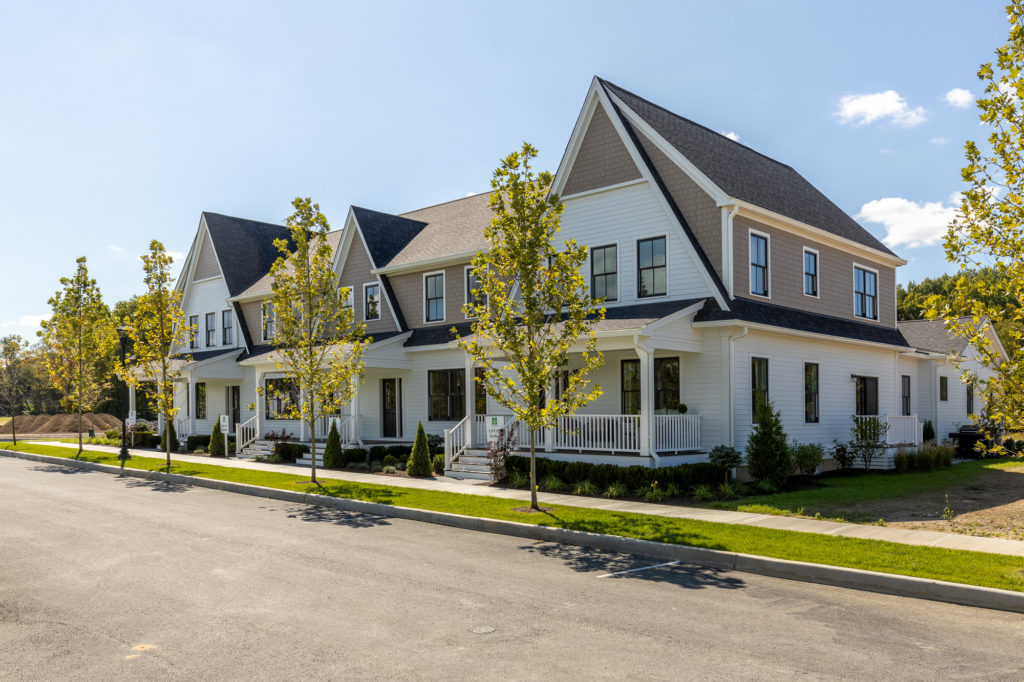
Photo by: Alon Koppel Photography
What was it like to work with the Tradition at Red Hook team?
It’s been great! Of course every development team has different vision and goals for the places they are creating – but this is what makes working on these kinds of projects exciting. What’s important is that the whole team is invested in creating a place infused the values of creating true community. The Tradition team has undoubtedly taken this to heart. I’ve worked with Kirchhoff Companies several times over the years; I have always found them to be terrific partners whose attention to detail and quality work is at the heart of all that they do. They believe in making lasting contributions to the communities that they work within and it shows.
What inspired the various home designs for Tradition at Red Hook?
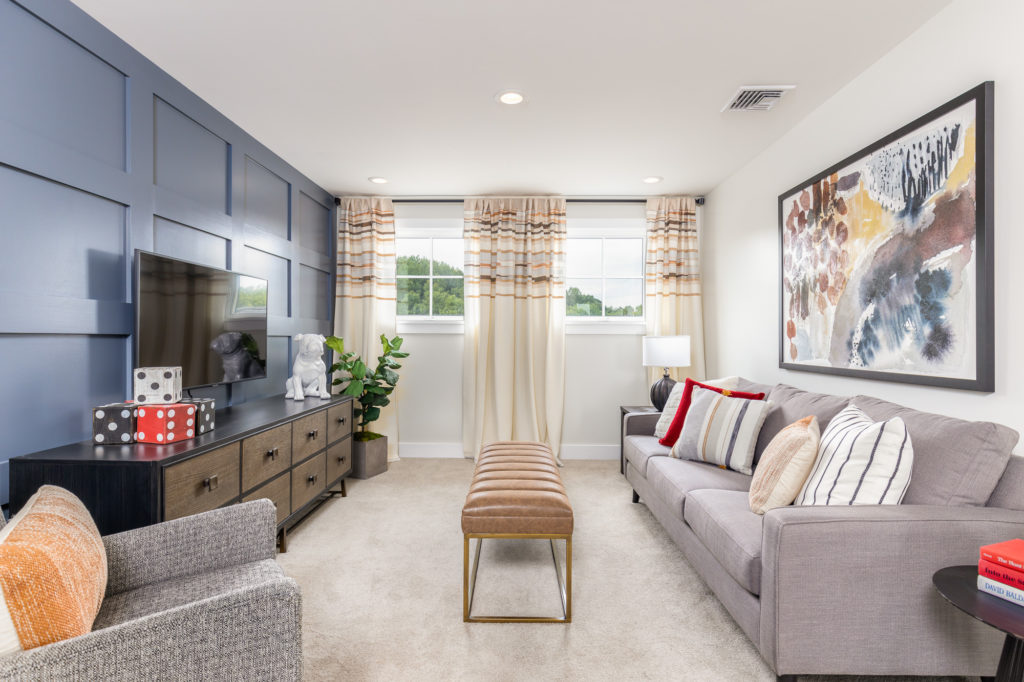
Photo by: Alon Koppel Photography
As part of our design process we always look at the prevailing architectural patterns in the surrounding community for inspiration. We think that it’s very important that the architecture in a new neighborhood borrow from patterns of design and craft that we find in the existing community. We try to cross the entire spectrum – from simple farmhouses to the more decorative in-town homes and borrow from patterns we see to make homes feel like they have resonance within the broader community.
Tell me about your creative process and what keeps you inspired.
I gain inspiration from the place in which I’m working. What I love about the TNDs is that they are always in, near, or part of a community that has its own unique characteristics. You’re building on the historic pattern you find in each community, which means that every time you work on a TND, it’s largely a brand new experience. The most successful new neighborhoods should feel like a natural outgrowth of the existing community – this brings a real authenticity to them. This is a huge challenge but also can be very inspiring.
If you were moving to Tradition, which home would you choose and why?
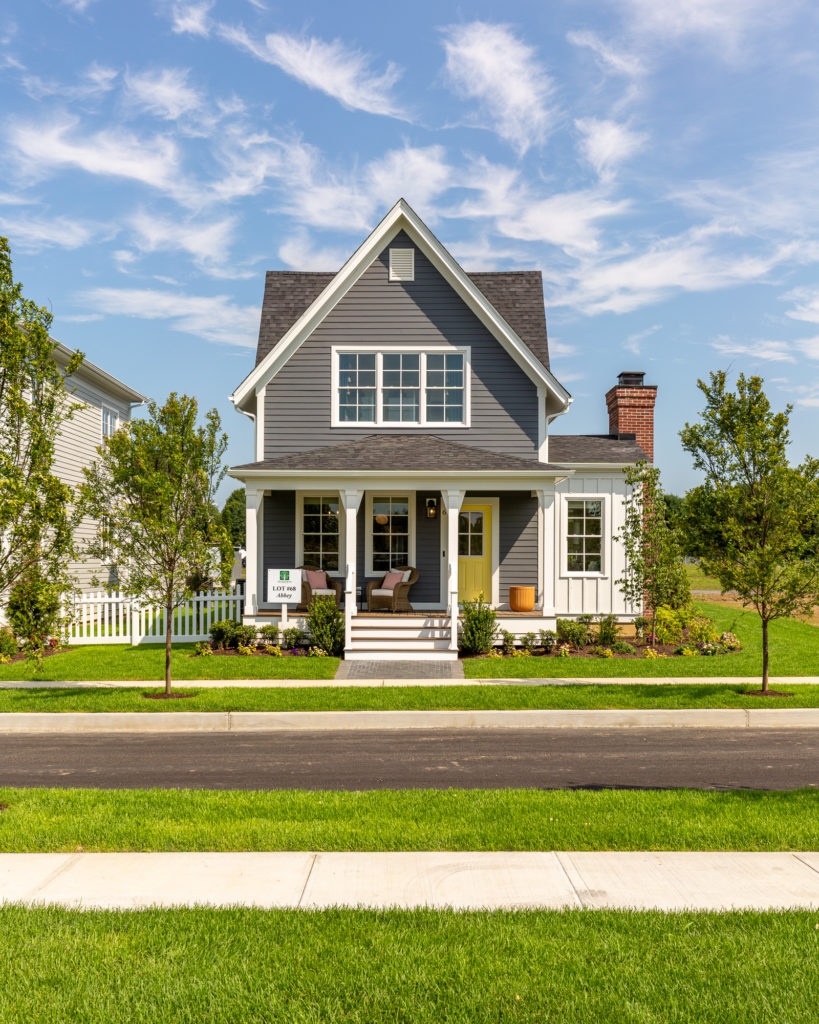
Photo by: Alon Koppel Photography
I would choose a two-story cottage because I have a small family and I am a big fan of compact living – both as a neighborhood and for my home. I like small, cozy spaces. It also means that my 14-year-old has to talk to me (and ideally help me!) while I’m making dinner – I love that.
